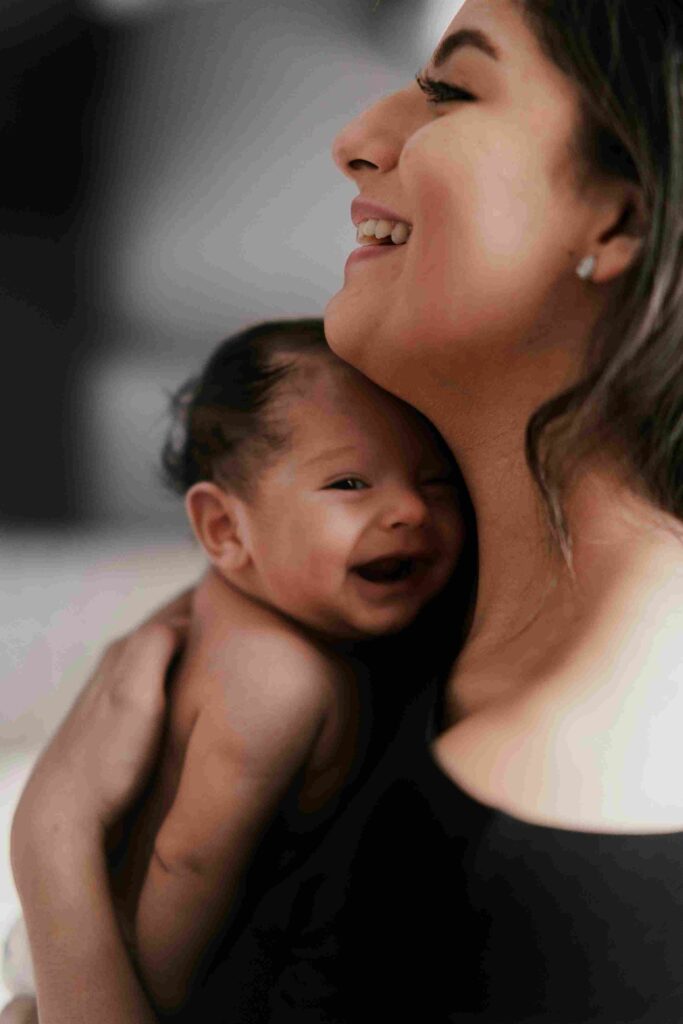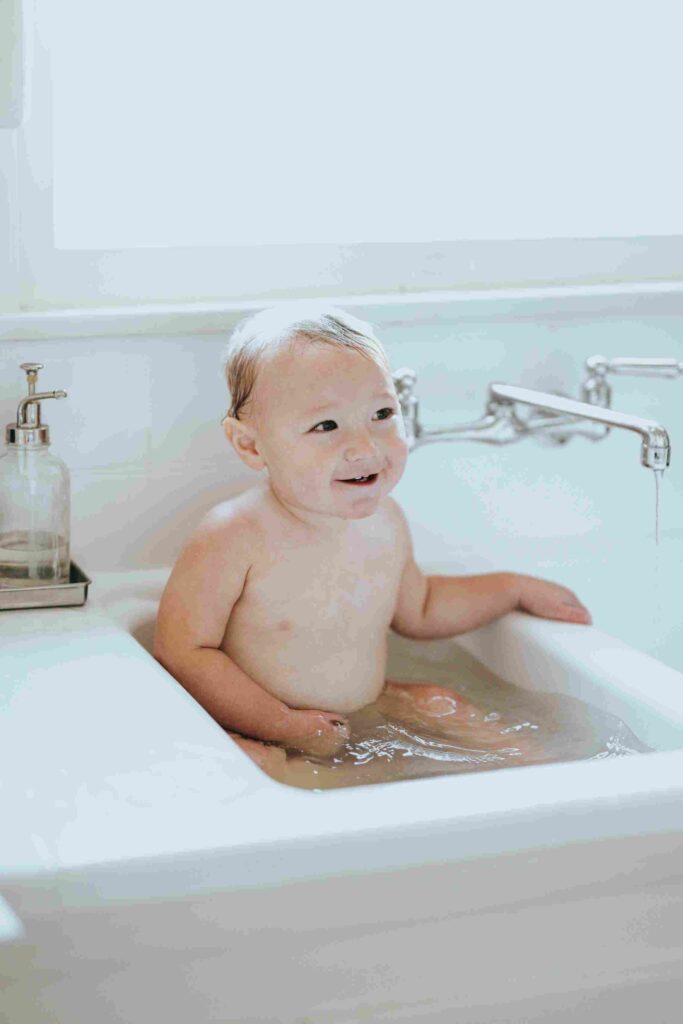Differences Between Cradle Cap and Dry Scalp in Babies

As a novice, telling the differences between cradle cap and dry scalp in babies can be challenging, given that their symptoms are similar. Both conditions might present similar symptoms: dry, flaky scalp, before the cradle cap progresses. In case you missed my article on cradle cap in babies, read it here.
What Causes Dry Scalp in Babies?
A dry scalp in babies could be caused by:
- Failure to fully rinse shampoo on the baby’s hair dehydrates the scalp.
- Sunburn on the head.
- Wrong hair and body products, such as shampoos for adults.
- Hot or extra-long baths.
- Harsh weather (hot or cold temperatures, low humidity, strong winds, etc.).
The severity of dry scalp depends on the strength of these conditions or their combination.
What are the Symptoms of Dry Scalp in Babies?
A baby with a dry scalp will have the following symptoms:
- Discomfort: squirming, crying, or scratching the head more than usual.
- Slight inflammation.
- Dry skin on the baby’s scalp; scaly, peeling, or flaky.
- Discoloration of the scalp.
What Causes Cradle Cap in Babies?
There is limited knowledge on the exact cause of cradle cap in babies. However, I explained in depth about the condition, including symptoms and management tips.
What are the Symptoms of Cradle Cap in Babies?
A baby’s head with a cradle cap will have these symptoms:
- Rough and oily patches protrude from the skin.
- Small, oily, and crusty patches that feel rough and greasy.
- Unfamiliar spots on the baby’s neck, head, upper arm, or face.
How Should You Treat Dry Scalp and Cradle Cap in Babies?
Don’t let the dry scalp and cradle cap paranoia make you succumb to the pressure of buying overhyped, overpriced, but substandard products in the market. Instead of buying these otherwise harmful products, follow these seven tips to manage cradle cap and dry scalp in babies:
P.S. I discussed some of these tips in an article on dandruff in babies.
1. Gentle Brushing of the Baby’s Scalp
Massaging your baby’s scalp regularly removes dead skin, which causes the skin to dry. The constant and regular gentle massage also allows new and healthier skin cells to develop.
2. Application of Cradle Cap Cream
Applying a cradle cap cream on the baby’s scalp helps eliminate cradle cap and flaky skin in the case of a dry scalp. After applying cream to the affected area, massage it gently until well moisturized. Ensure the cradle cap cream is made from naturally derived ingredients since it is safer.
3. The Use of Gentle Hair Products
As I have mentioned in my earlier articles, a baby’s skin, particularly the scalp, is extremely sensitive and requires gentle products. Whether using a shampoo, cleanser, or body wash on your baby, ensure it is gentle on their scalp. Gentle bath-time products leave your baby’s scalp moisturized and alleviate dry scalp and cradle cap.
4. Maintaining the Right Bath Water Temperature

Maybe your pediatrician or experienced person never told you this, but a baby’s bath water should be the same temperature as their body’s. The water temperature should be the same if the baby’s temperature is 100F.
What if the water is one degree less or more than the baby’s temperature? That is still okay.
Matching the baby’s temperature to the water temperature maximizes their comfort during bath time. Additionally, it minimizes the reaction on the baby’s delicate scalp, which could dehydrate the scalp.
5. Bathing the Baby Regularly
Does bathing my baby frequently reduce dry scalp and cradle cap? This is a common question that most parents and caregivers ask themselves.
Bathing a baby regularly might not directly alleviate cradle cap and dry scalp but keeps the scalp moist and healthy. After bathing them, apply baby oil and gently massage the scalp.
6. Keeping Baths Short
As you bathe your baby regularly, don’t forget to keep the baths short. Bathing a baby for a long time removes sebum, an important oily substance, from the scalp, dehydrating it. Thus, although bathing the baby regularly is hygienic, it should not exceed 10 minutes.
7. Keeping Baby Away from Harsh Weather Elements
Babies are delicate, and exposure to harsh weather makes them susceptible to cradle cap and dry scalp. During the winter, your baby’s scalp loses a lot of moisture due to the low humidity levels, making it develop a dry scalp.
Similarly, during summer, your baby becomes susceptible to dehydration on the scalp and sunburns, two major causes of dry scalp. You can keep the baby away from these harmful weather agents by restricting them indoors.
You can wrap them with heavy clothes in winter and apply baby oil on their scalps. Similarly, apply sunscreen on the baby’s skin during summer to protect them from harmful sun rays.
Bottomline
The reason why your baby has a cradle cap or dry scalp is due to the factors above. You don’t have to spend quite a fortune as a parent or caregiver to manage the two conditions. The seven tips on managing cradle cap and dry scalp in babies will help you. I should also recommend the best products to manage cradle cap and dry scalp in babies. If you buy the products through my affiliate link, I will earn a small commission at no extra charge to you. What do you think?



